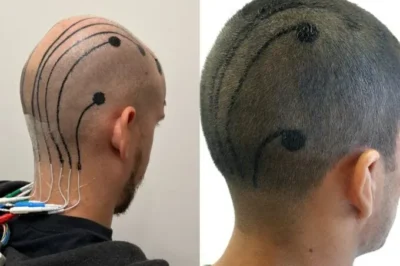These temporary tattoos could eventually replace clunky EEG wires and “potentially revolutionize” brain-computer interface devices

Scientists at the University of Texas at Austin and others developed the tech, which aims to avoid the limitations of conventional electroencephalography, or EEG, testing. The researchers were able to successfully measure people’s brain activity using specially designed liquid ink that was non-invasively printed onto their patients’ scalps. The innovation might make EEGs and other diagnostic tests much more convenient to perform.
The researchers still have many small and large adjustments to make to their technology before it’s ready for public use. They eventually hope to lace their ink with wireless data transmitters, for instance, which could allow doctors to someday perform a truly wireless EEG test.
See gizmodo.com/these-temporary-ta…
#Blog, #EEG, #health, #technology
There are no comments yet.